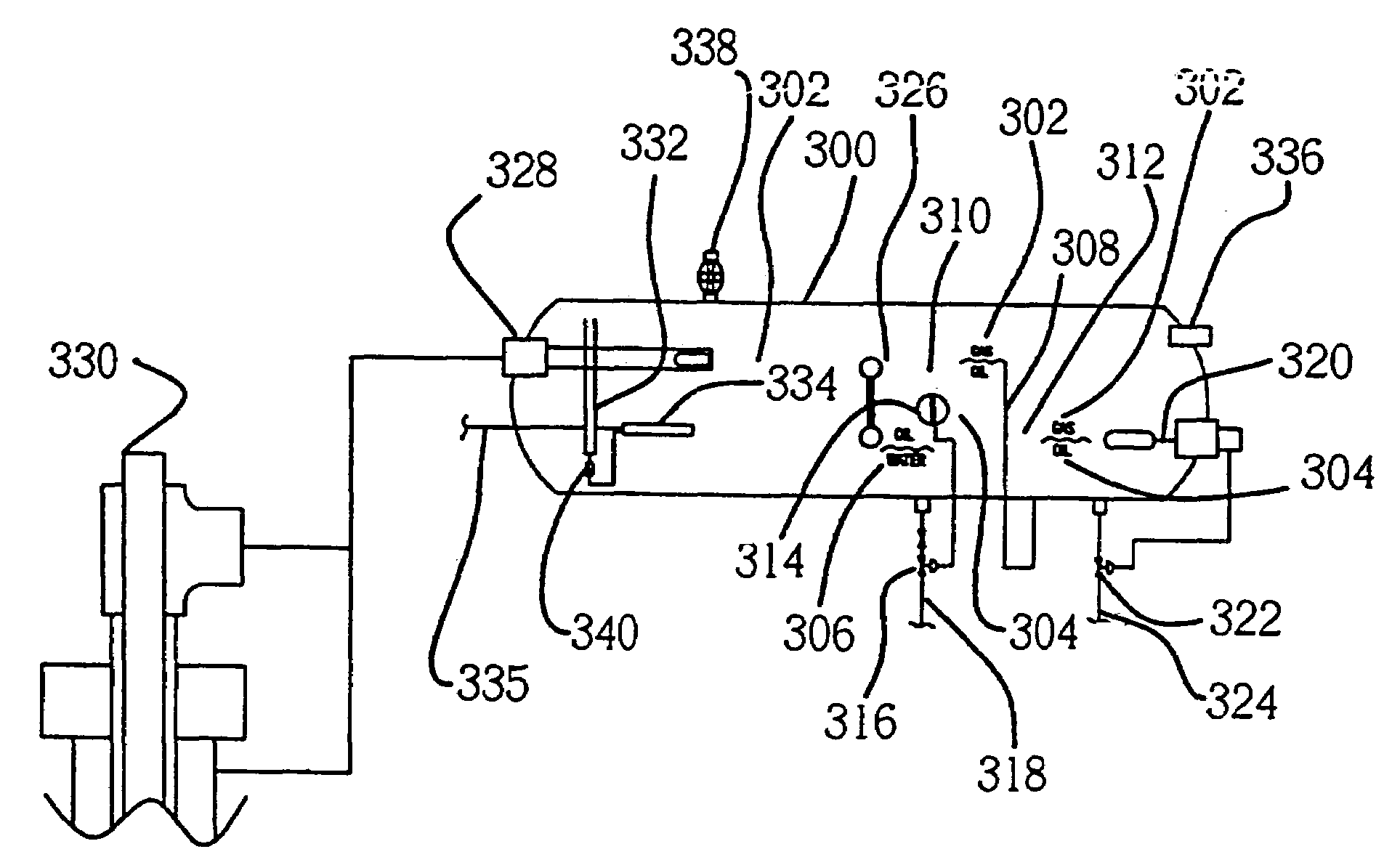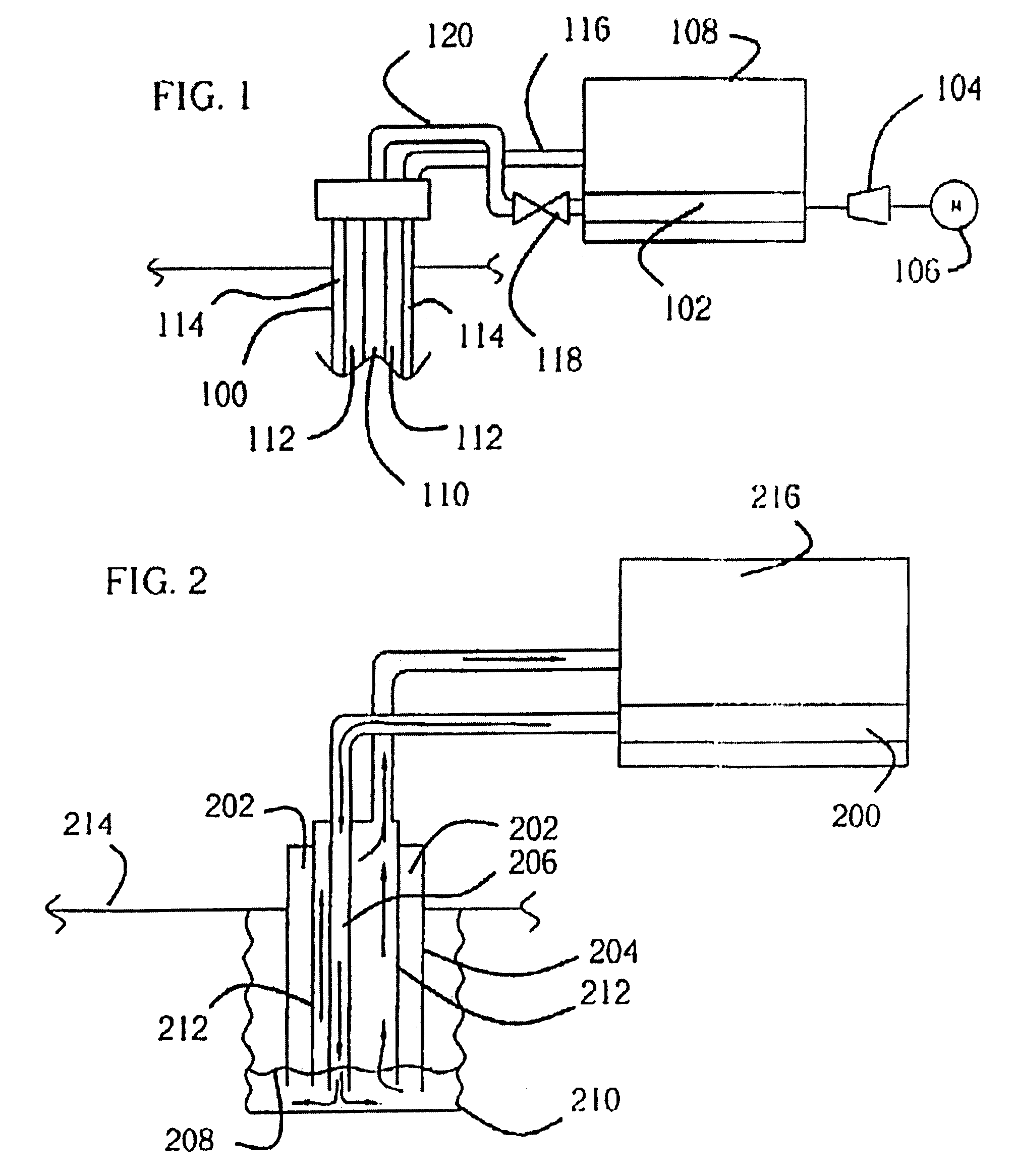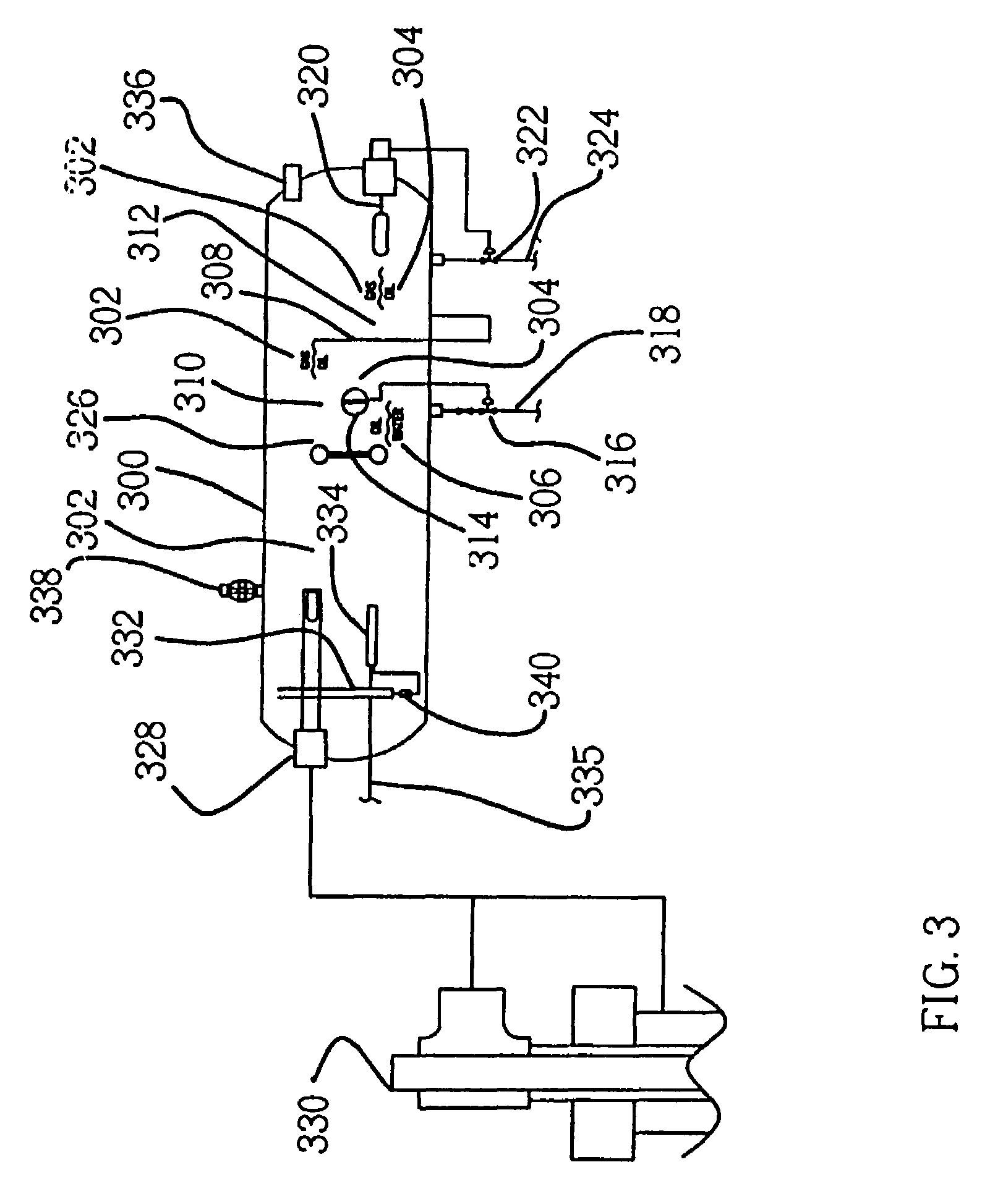Heat exchange compressor
a compressor and heat exchange technology, applied in the direction of insulation, lighting and heating apparatus, borehole/well accessories, etc., can solve the problems of high installation, operation and maintenance costs, increased production costs, and increased production costs, so as to reduce the cost of compressing and reduce the cost of production. , the effect of simplifying the design
- Summary
- Abstract
- Description
- Claims
- Application Information
AI Technical Summary
Benefits of technology
Problems solved by technology
Method used
Image
Examples
example 1
[0072]The average well performs best with 40-60 PSIG back pressure on the lift system. The following example uses 40 PSI as the operating pressure in a BPU using a HEC with two cylinders with 108″ strokes and 1.1875″ ram cylinder bore radiuses and a 30 gallon per minute hydraulic pump. The low compression cylinder has a bore radius of 4″ and the high compression cylinder has a bore radius of 2″.[0073]Maximum Ram Pressure Available: 3000 PSIG[0074]Input Pressure to First Cylinder: 40 PSIG[0075]Swept Volume of First Cylinder: 5430 Cubic Inches[0076]Input Volume to First Cylinder: 11.7 Standard Cu.Ft. Gas[0077]Minimum Ram Pressure Required for First Cylinder: 2537 PSIG[0078]Discharge Pressure from First Cylinder: 210 PSIG[0079]Discharge Swept Volume from First Cylinder: 1357.7 Cubic Inches[0080]Minimum Ram Pressure Required for Second Cylinder: 2864 PSIG[0081]Input Volume to Second Cylinder: 2.85 Cubic Feet[0082]Discharge Pressure from Second Cylinder: 1000 PSIG[0083]Discharge Volume f...
example 2
[0085]The engine in Example 1 controls the pump frequency. Lifting capacity is controlled by the volume of the low pressure cylinder, the pressure ratio, and the number of strokes per time unit. For a gas from the separator at 40 PSIG, a pressure ratio of 4.1, and a frequency of 6 to 8 strokes per minute, the lifting capacity of the unit in Example 1 is 114,180 cubic feet per day. Based on ⅓ HP per gallon per 500 PSI, the power required to lift this volume is 56.57 horsepower (peek load at the end of the stroke) or 33.6 horsepower (average for entire stroke) for both cylinders at maximum operating pressures.
example 3
[0086]Over a two hour period during which oil and water are lifted from the well, 40,000 BTU is transferred from the compression cylinders of Example 1 to 4,000 pounds of water in a separator with a three stage capacity of 900 BBL / day, thereby increasing the water temperature 100 degrees F. This hot water is injected into the well for maintenance without interrupting production.
PUM
 Login to View More
Login to View More Abstract
Description
Claims
Application Information
 Login to View More
Login to View More - R&D
- Intellectual Property
- Life Sciences
- Materials
- Tech Scout
- Unparalleled Data Quality
- Higher Quality Content
- 60% Fewer Hallucinations
Browse by: Latest US Patents, China's latest patents, Technical Efficacy Thesaurus, Application Domain, Technology Topic, Popular Technical Reports.
© 2025 PatSnap. All rights reserved.Legal|Privacy policy|Modern Slavery Act Transparency Statement|Sitemap|About US| Contact US: help@patsnap.com



